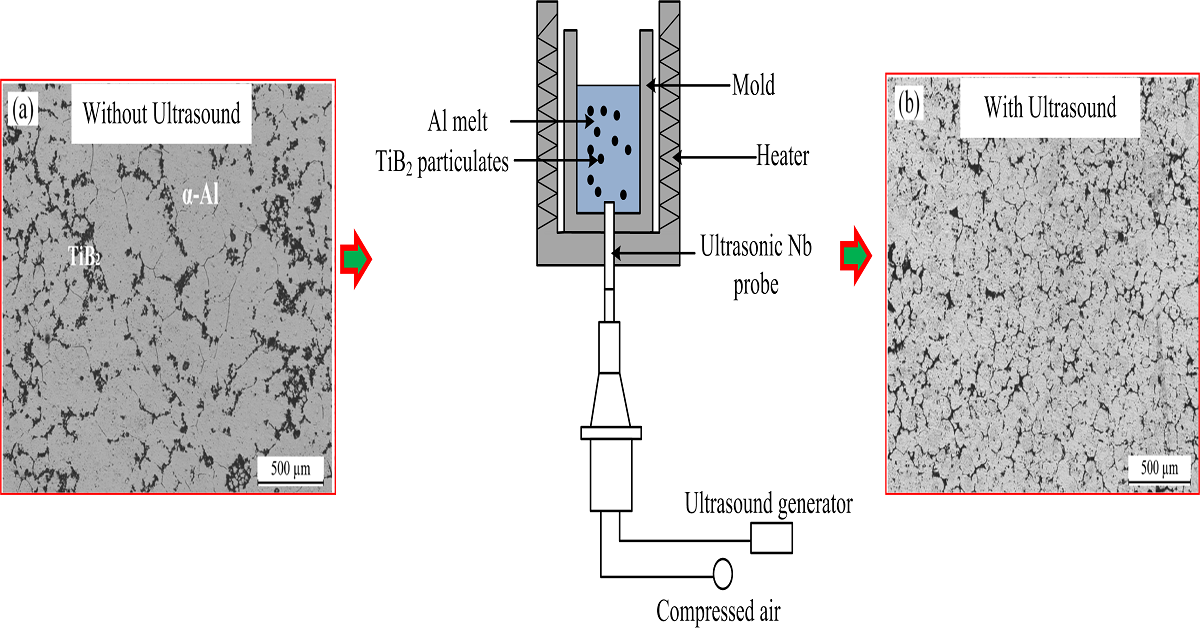Effects of Ultrasound on Microstructure and Mechanical Properties of Metal Composite Materials
A special issue of Metals (ISSN 2075-4701). This special issue belongs to the section "Metal Casting, Forming and Heat Treatment".
Deadline for manuscript submissions: closed (31 July 2022) | Viewed by 4033

Special Issue Editor
Interests: solidification; casting; ultrasound; Al/Mg alloys and their composites; nuclear shielding materials
Special Issues, Collections and Topics in MDPI journals
Special Issue Information
Dear Colleagues,
Metal composite materials (MCMs) have become evident as a significant class of materials for structural and functional applications, such as in the automobile, aerospace, and military industries. It is well known that the microstructures of MCMs directly influence their mechanical properties. Microstructural control has been paid increasing attention in the fabrication or modification of MCMs. Ultrasound has been widely used in organic synthesis, material and organometallic chemistry, and industrial manufacturing processes, for the intensification of chemical/physical processing applications which can be promoted significantly in ultrasonic fields. Searching for new approaches in MCM fabrication by using ultrasound to improve conventional methods and develop new means of melting, casting, solidification, welding, and deforming processes (other methods are also included) are issues of critical importance for the development of MCMs.
In this Special Issue, we aim to publish a wide scope of articles covering the usage of ultrasound in the fabrication of MCMs, focusing on the effects of ultrasound on the microstructure and mechanical properties of MCMs. In the meantime, papers regarding the simulation of ultrasound in the preparation of MCMs are also welcome.
Prof. Dr. Zhiwei Liu
Guest Editor
Manuscript Submission Information
Manuscripts should be submitted online at www.mdpi.com by registering and logging in to this website. Once you are registered, click here to go to the submission form. Manuscripts can be submitted until the deadline. All submissions that pass pre-check are peer-reviewed. Accepted papers will be published continuously in the journal (as soon as accepted) and will be listed together on the special issue website. Research articles, review articles as well as short communications are invited. For planned papers, a title and short abstract (about 250 words) can be sent to the Editorial Office for assessment.
Submitted manuscripts should not have been published previously, nor be under consideration for publication elsewhere (except conference proceedings papers). All manuscripts are thoroughly refereed through a single-blind peer-review process. A guide for authors and other relevant information for submission of manuscripts is available on the Instructions for Authors page. Metals is an international peer-reviewed open access monthly journal published by MDPI.
Please visit the Instructions for Authors page before submitting a manuscript. The Article Processing Charge (APC) for publication in this open access journal is 2600 CHF (Swiss Francs). Submitted papers should be well formatted and use good English. Authors may use MDPI's English editing service prior to publication or during author revisions.
Keywords
- Metal composite materials
- Ultrasound
- Casting
- Solidification
- Welding
- Deforming
- Simulation
- Microstructure
- Mechanical properties
Benefits of Publishing in a Special Issue
- Ease of navigation: Grouping papers by topic helps scholars navigate broad scope journals more efficiently.
- Greater discoverability: Special Issues support the reach and impact of scientific research. Articles in Special Issues are more discoverable and cited more frequently.
- Expansion of research network: Special Issues facilitate connections among authors, fostering scientific collaborations.
- External promotion: Articles in Special Issues are often promoted through the journal's social media, increasing their visibility.
- Reprint: MDPI Books provides the opportunity to republish successful Special Issues in book format, both online and in print.
Further information on MDPI's Special Issue policies can be found here.





